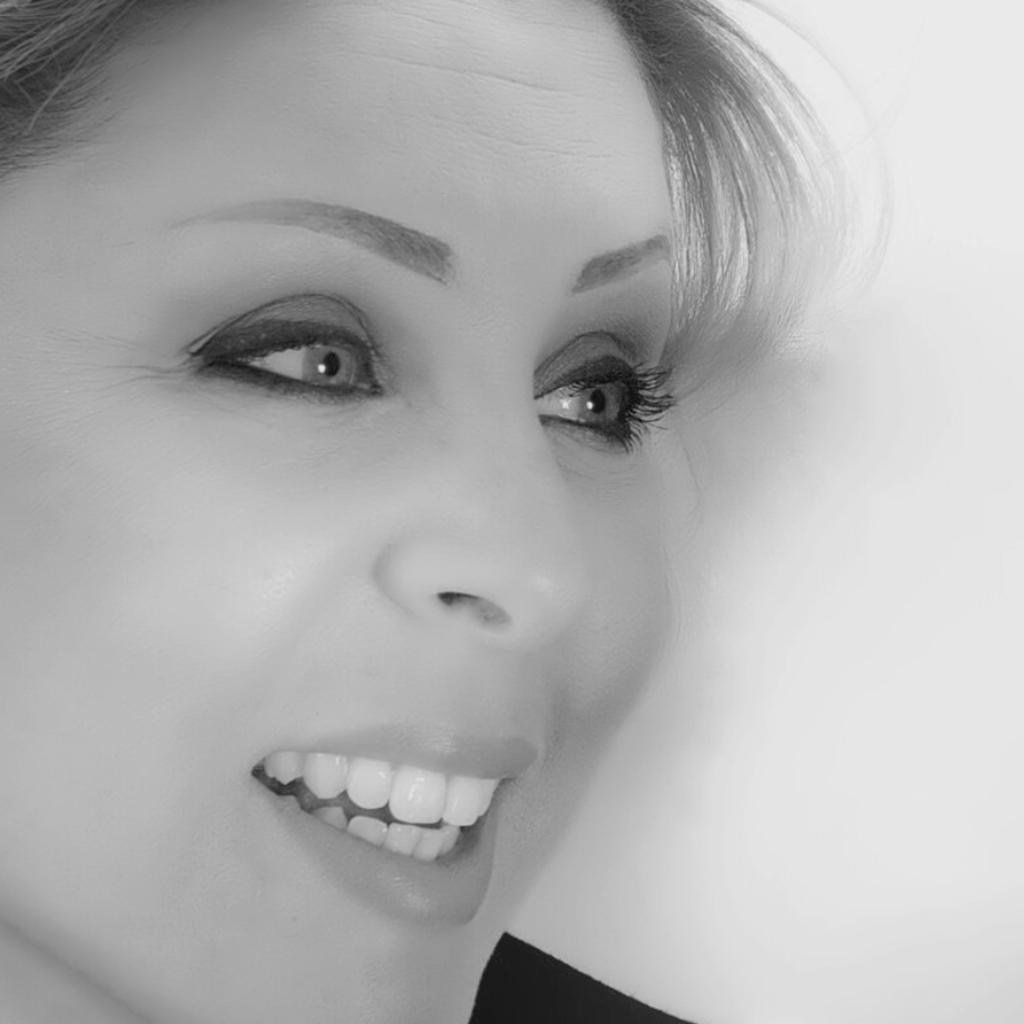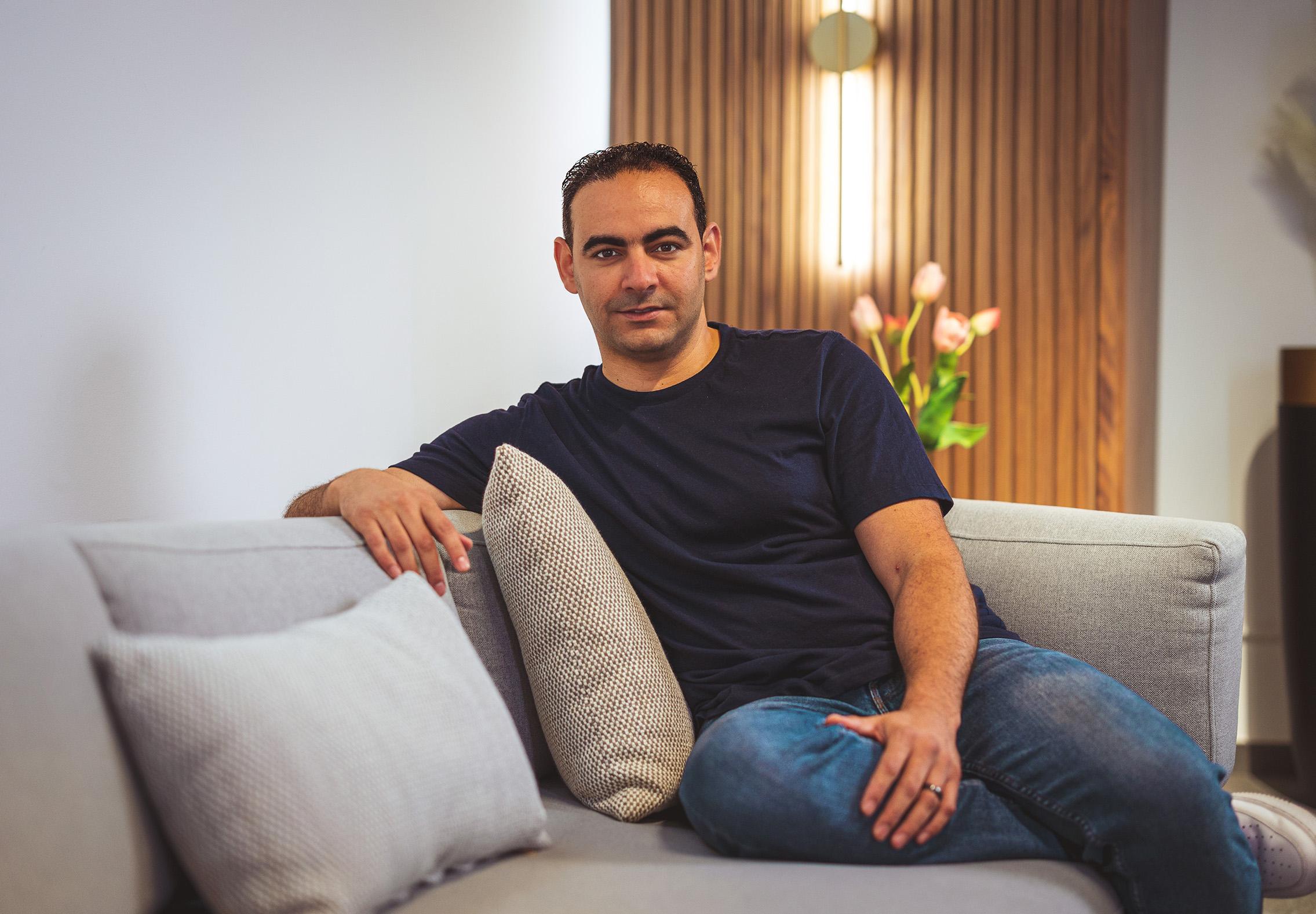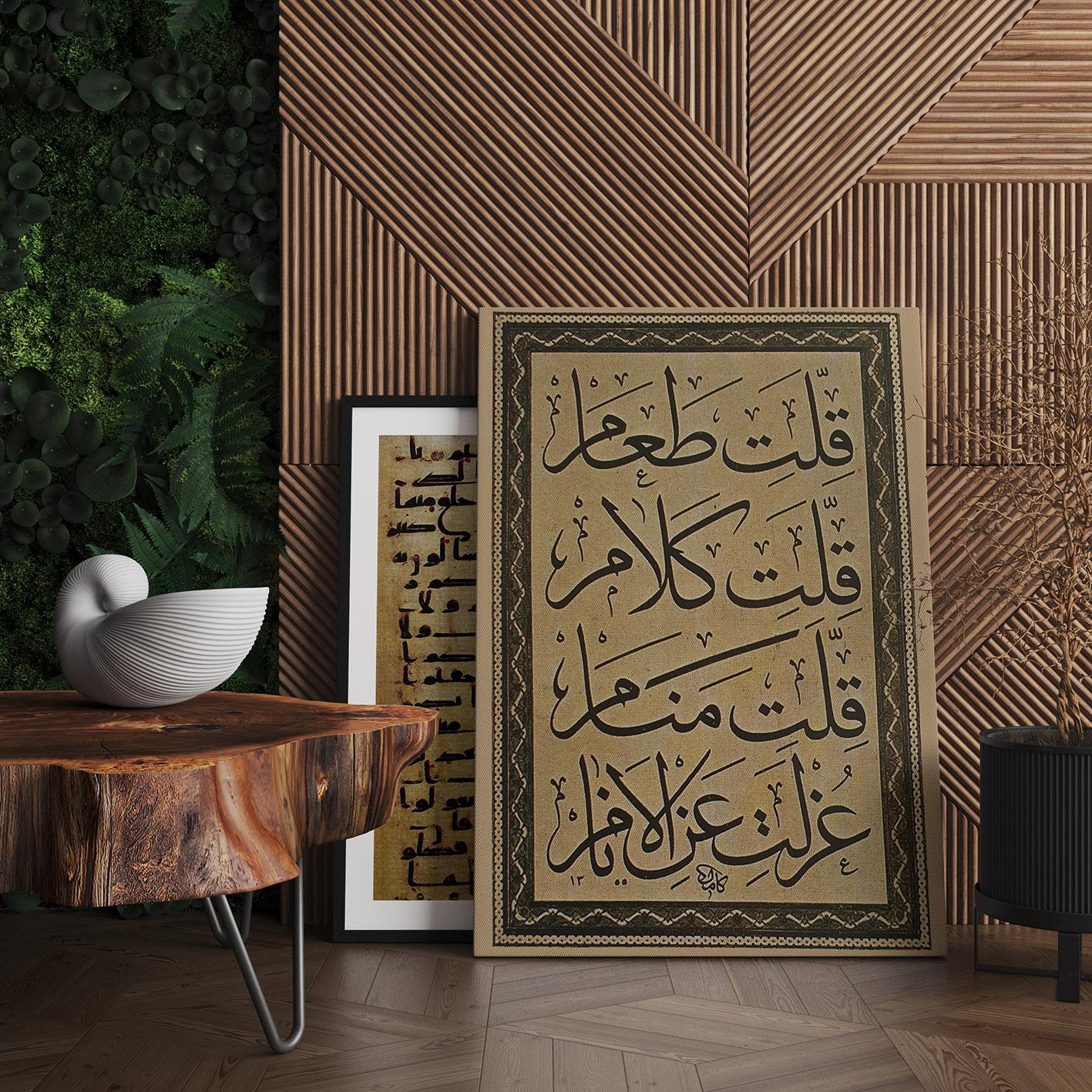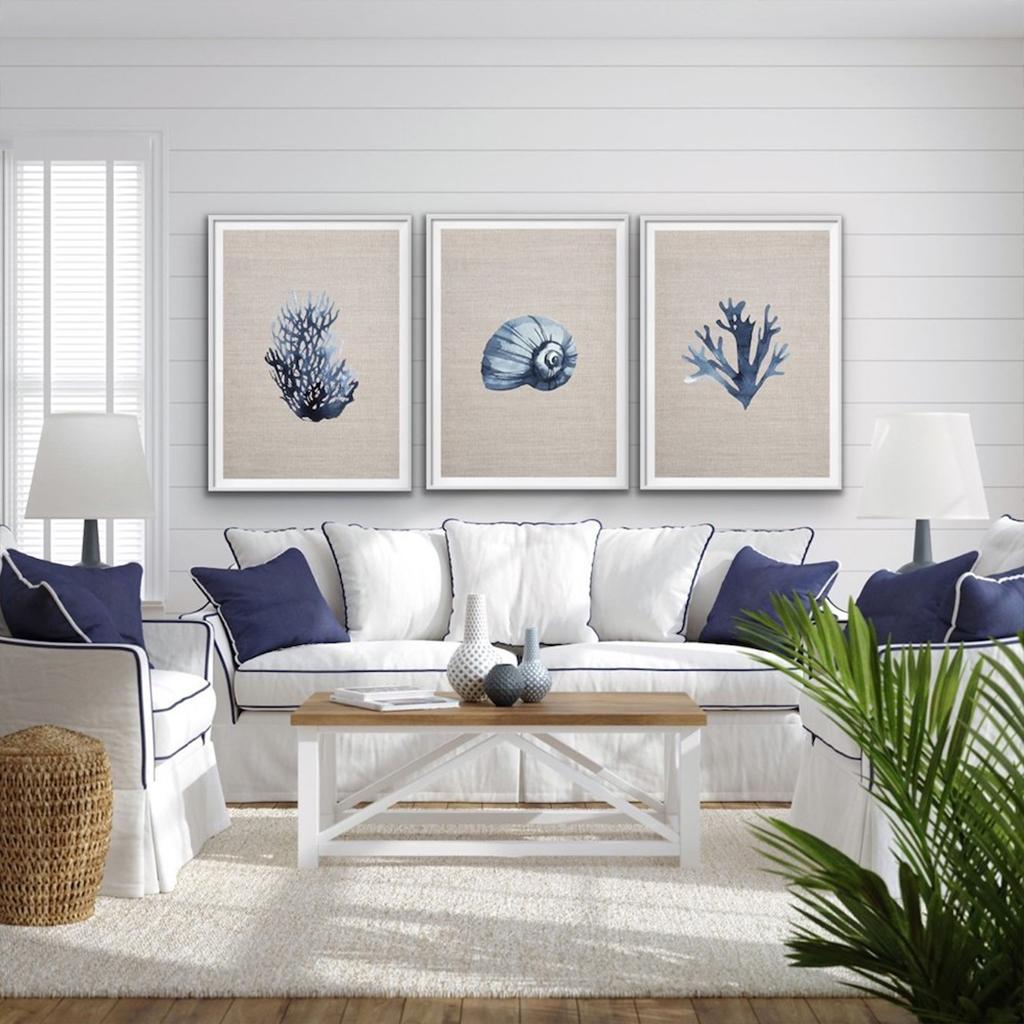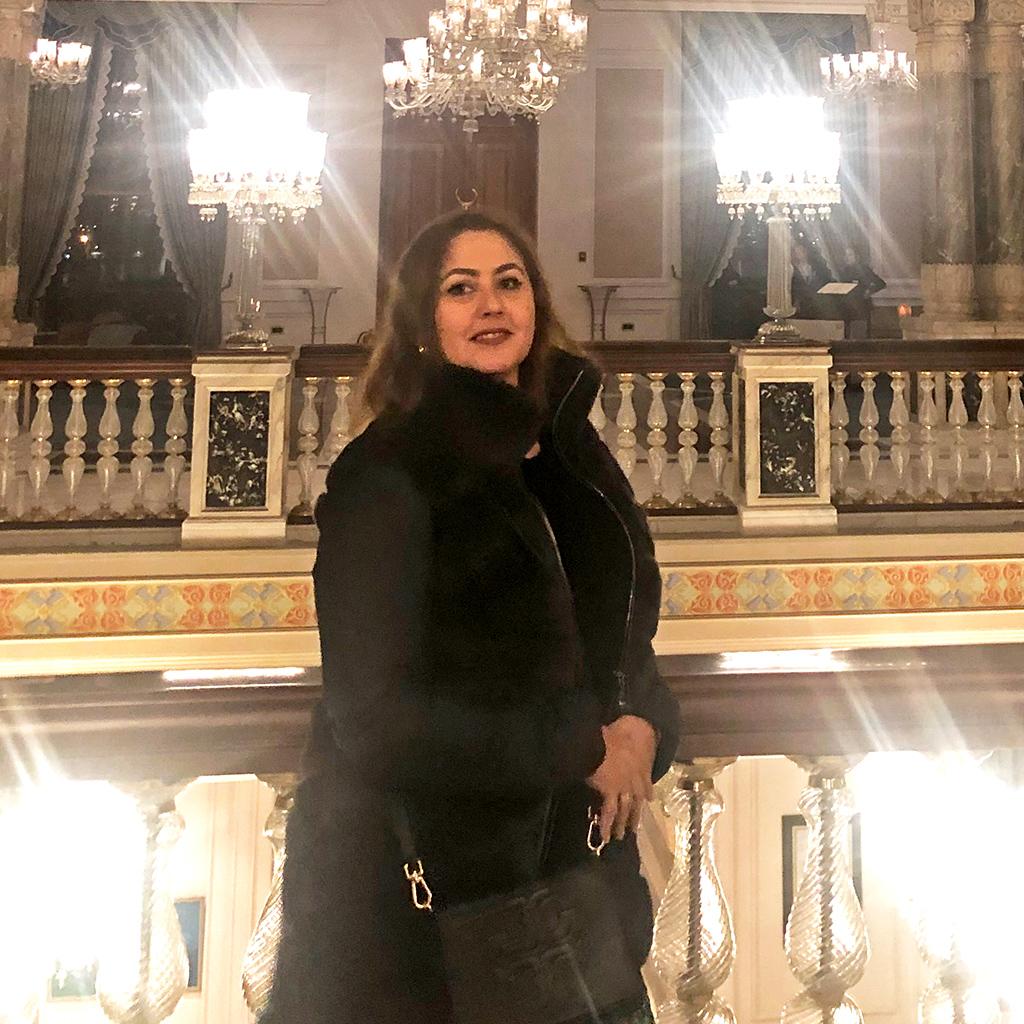
Written by: Yasmeen Ebada
Date: 2021-04-13
setting the bar for luxurious materials in architecture and interior design
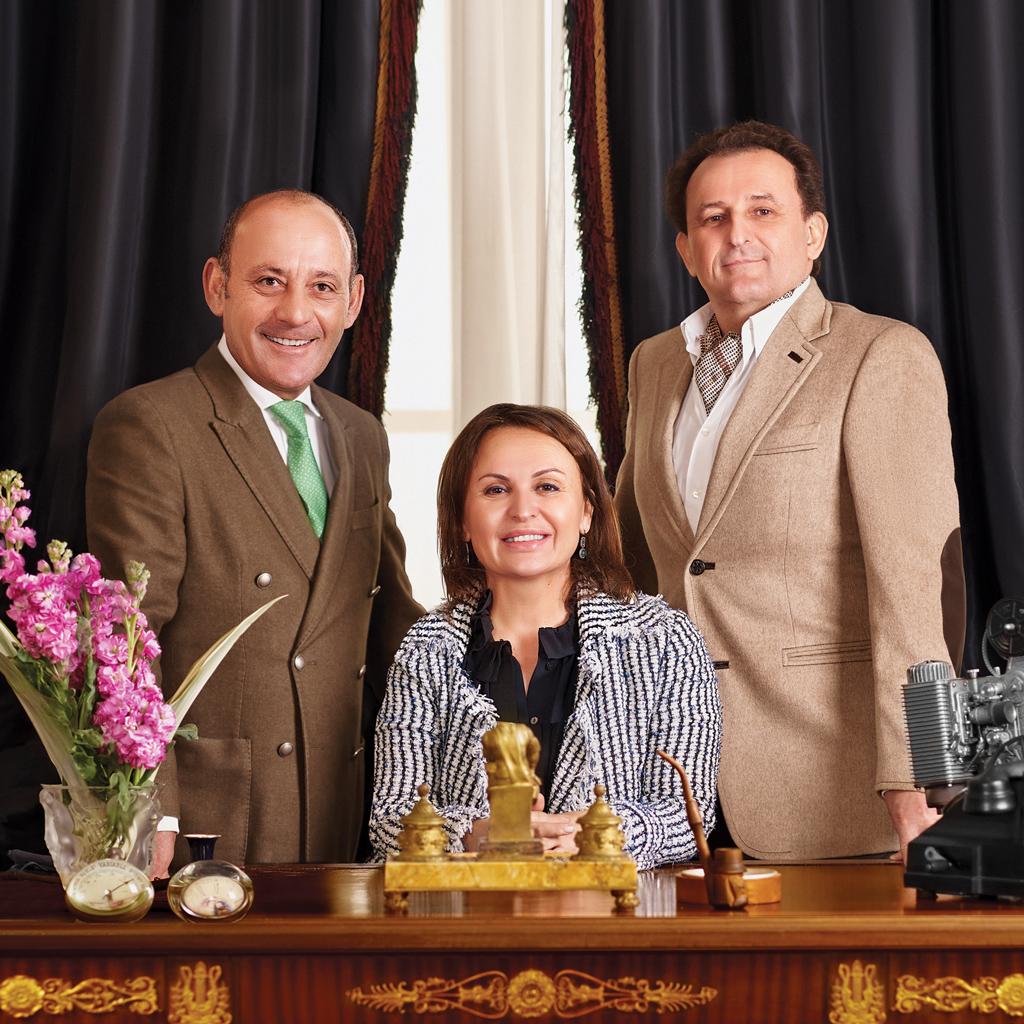
The three Libyan siblings, the Soufrakis, made us perceive architecture as an art form that reflects how we present ourselves across the earth's landscape.
Aynour Soufrakis, Helmi Soufrakis, and Noaman Soufrakis are a highly acclaimed, eclectic group of architects and designers who have an intriguing successful journey combining multi-cultural aspects with architecture, reflecting authentic masterful designs. The three siblings grew up in England where they attended boarding school, and later studied architecture and interior design in college. They had a dream, and so, in 1996, they established their architecture and interior design firm, Design and Build (DB) Architects, in Egypt and England. They rose to prominence delivering cutting-edge design and innovative design vision of the utmost quality. DB Architects’ work is recognizable and clearly defined, creating projects that excite the eye and indulge the senses. For the past 25 years, they have been executing residential, corporate and health care projects in France, Saudi Arabia, Libya, Italy, England, Lebanon, Czech Republic, and Egypt. They incorporate all kinds of architectural design styles: modern, classic, Islamic, and contemporary.
They strive to place the clients’ property in the pantheon of spectacular projects whether an individual luxury home or commercial development.

I have always believed that an architect’s home is their experimental canvas
From the exotic heart of Cairo, HE Home magazine conducted one of the two interviews and photoshoots in one of the private residences of a Soufrakis family member in Heliopolis.
I have always believed that an architect’s home is their experimental canvas – a place where they can explore new ideas without risking a client’s wrath. Stepping into the Soufrakis’ private dwellings gave a rare insight into their design ethos, as well as the objects and artifacts they collected. The house speaks volumes of their design style—full of rich décor, classic style, and bursting with the most luxurious, paintings, antiques, and materials.
The home opens onto a private terrace—where the conversation was held—. Walking on a wooden floor and surrounded by flashed natural greenery with the right color contrast provided by the roses, the house merges traditional and vernacular elements, as well as diverse artistic currents, into a new synthesis. The furniture and light fixtures were also carefully chosen to complete the look and the cozy atmosphere.

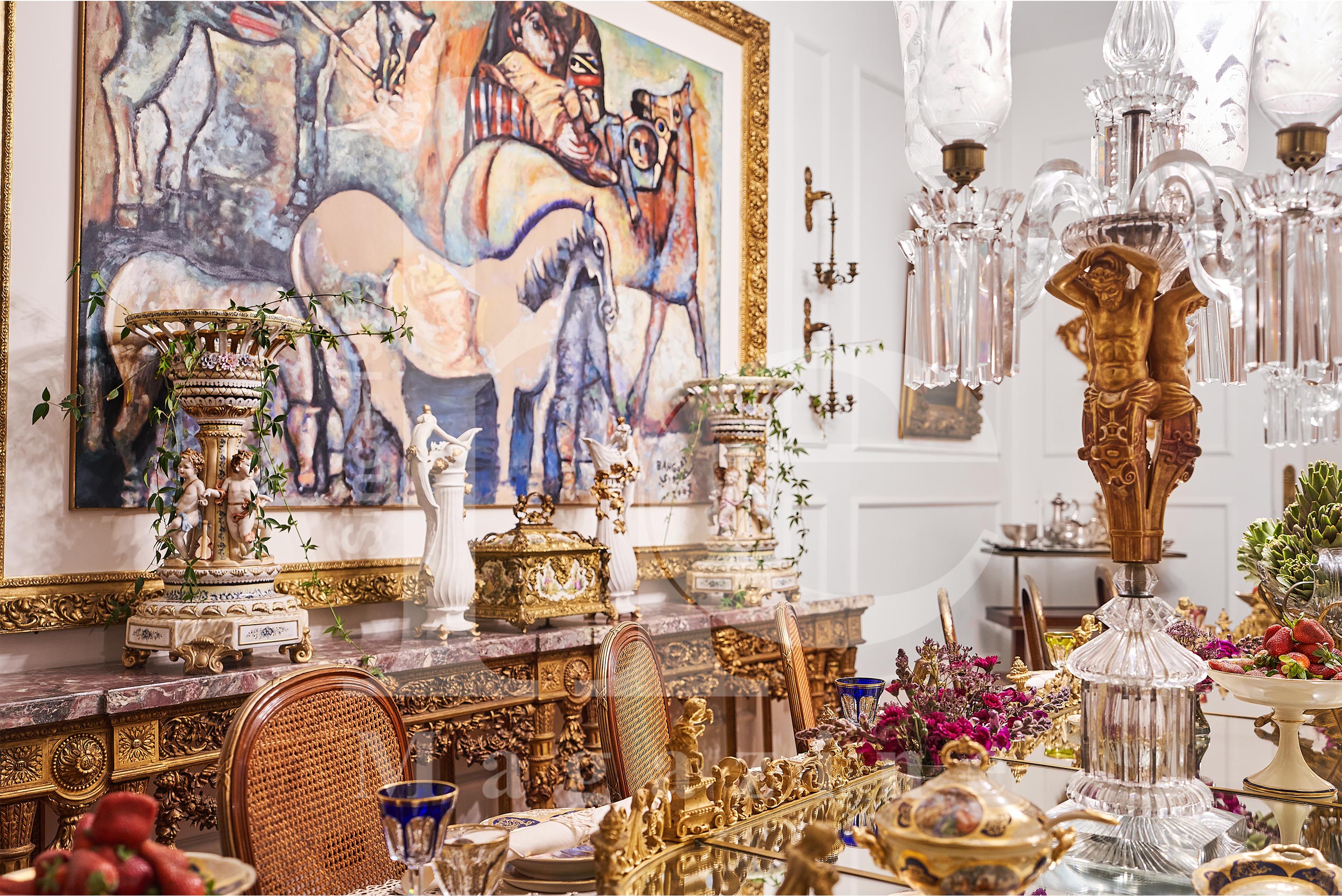




DESIGN PHILOSOPHY
Creating environments with soul and meaning, taking advantage of the natural beauty in materials
Beautiful buildings are the cornerstone for the development of society. Each society is bound by its specific environments, traditions, cultures, and its religious beliefs which are reflected in its unique details that together form unique architecture.
DB Architects reflect those traditions and cultures and transform them into architectural form and interior luxury. Architectural elements such as space, proportion, line, shape, value, texture, color, balance, repetition, rhythm, contrast, and movement make up the architectural experience.
Architecture should uplift the spirit of mankind. It should also improve and facilitate the user’s activities.
“The correct usage of materials, height, and space is my ABC design philosophy,”Aynour, the lead interior designer, said. “Height is essential because it is grand. It makes you feel big. It’s endless. In my opinion, this is the most important thing in design.”
Design is all about the character and the environment surrounding the client. Therefore, they listen to their clients’ needs and transform them into concrete, creating a new identity for every home.

"Design is all about an individual,” Aynour said.
“The most important thing in designing a luxury house is that the owners feel it, and see it as a real ‘home’. It should reflect them, their ideas, and their interests in the most artistic and functional way possible.”
“Aynour has the talent to turn a room over,”Noaman said.
The siblings do not have a specific design style or theme; they gained more diverse ways of working and a versatile mindset, and in turn, learned to listen, read, and observe.
“My theme is anything you wish,”Aynour said. In her designs, Aynour likes to studythe surroundings to better understand which foliage, light, horizon, and other natural elements form the initial visual atmosphere. She uses antiquities and special lighting to provide a certain light effect, reflecting the ground, top, and sides in a way that contributes to the overall setting. She emphasizes the usage of natural light by using a different approach to skylights.
Aynour also encourages the open space concept of the living zones in modern architecture and design. She prefers to place the modern kitchen into the center of the decor composition, and she prefers sliding walls over doors because they are more dynamic. The open space gives a different feel altogether.
“Dynamic spaces make a place less boring,”Noaman said.
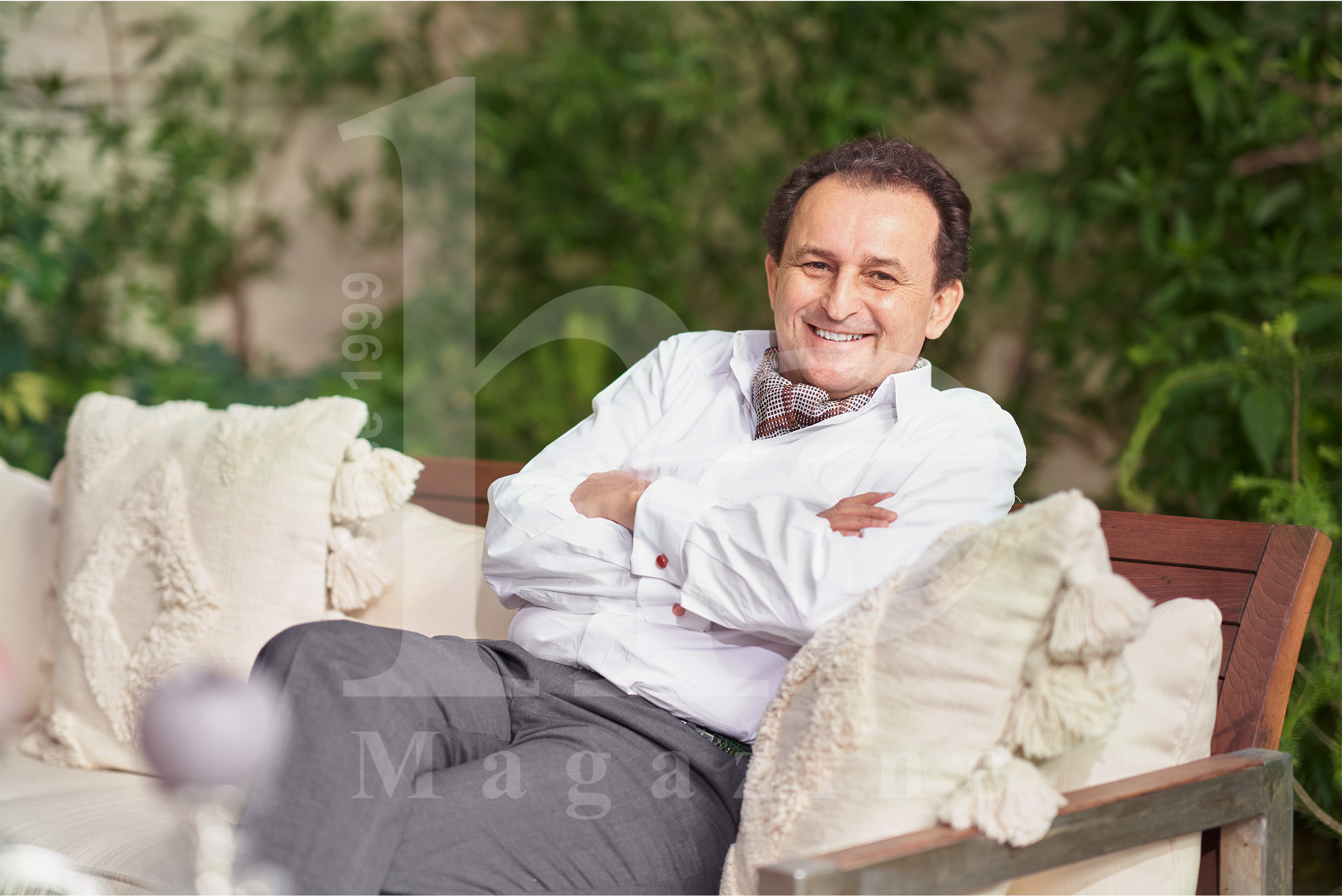
Architecture and technology have always intersected at a precarious crossroads.
Helmi, the lead engineer and architect, believes that architects should not let the development of technology affect their imagination…which is a challenge.“Technology here is not in the theme of home automation. We need to hold on to our human identity and not allow the technology to distance us—the architects— from performing our original role,” Helmi said.
The siblings’ strength lies in their choices of materials and how to use them appropriately. “We are experts in choosing the right materials for each project,”Aynour said. Exemplary architects know how to get the material to express itself in the design. “The idea is to use whatever natural material we have, making sure that it’s within the client’s budget; the colors and texture are what make the design stand out. We don’t try to make something look fake, on the contrary, we try to study the material, its nature, and how it could benefit the design,”Helmi said.
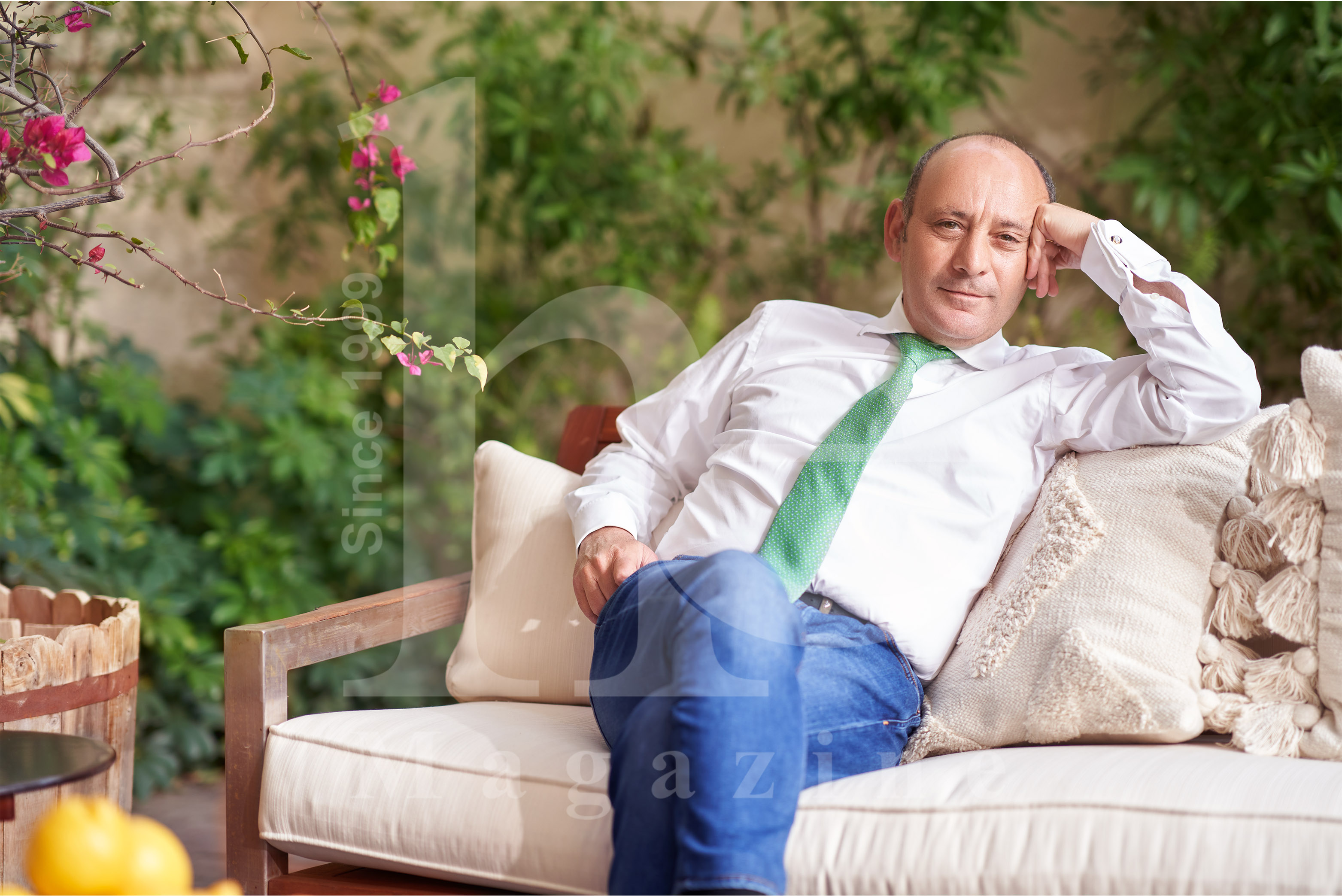
Architects should test how far they could push the materials’ boundaries. “The richness of the materials once put together correctly as a mix gives you that difference you look for in the design,”Noaman, DB Architects’ Project Manager, said. “Highlighting the nature of that material through the engineering is ultimately the essence of design.”
Before the advancement of technology, people’s demands were simpler, and therefore people did not have the same vision or imagination that this newer generation has today. This triggered an increase in design demands and expectations. Back then, architects drew a small sketch showing the client how one side of the room will look like. Now, architects have to create a 3D watercolor sketch of an entire house and a 3D video—including landscape, hardscape, lighting, engineering, and designing—of how they will walk through the space.
“Technology is allowing us to do that now,”Aynour said.
The trick is perfecting every little detail in the space. “Our work includes all the little details, giving a virtual reality kind of experience. For example, showing the client where they drink their cup of tea or the best place with the convenient lighting for reading. This is what makes us different from any other firm; we even show the clients what their first party in their home will look like,”Aynour said.

A space is “balanced” when the positioning of objects within it is well-calibrated for visual impact.
Architects should have a vast knowledge of the quality, texture, elasticity, limitations, and colors of the various materials used, and this is precisely what distinguishes the trio in their line of work.
“Aynour has a talent for turning things around. For example, using something like a piece of jewelry and turning it into an architectural space,”Helmi said.
All three siblings put a huge emphasis on educating and enlightening their clients. “They see something you do well, and they want the same and more. You have to educate them in terms of what can be done in the space, the materials’ functions, limitations and capabilities,”Noaman said.

Creating a “home” not a “show house.”
Color, symmetry, and eclectic artworks are very important elements for the architect, but he has to also put into consideration the element of ‘comfort’, creating a space that caters to the clients’ needs.
“You listen to their vision, and using concrete and bricks, you apply what they want. At the same time, you have to surpass their needs,”Helmi said. “Give them what they thought they never wanted or needed. It is our responsibility to exceed their expectations with our expertise; this is what really distinguishes an architect from another.”
Establishing a mutual understanding of the end-to-end design process leads to the foundation for a trustworthy and rewarding designer-client relationship.
Projects end, but not the relationships built. The three siblings value the long-term client relationship. “We invest in every single detail, and work genuinely, putting our heart and soul into the success of the project. The success is not only reflected in the final outcome, but it is about the whole journey, conducting easy communication, understanding, and mutual trust between us and the clients. Eventually, clients become our friends…this is a true success,”Helmi said.
One of the most gratifying feelings is when an architect receives a project assignment, but what is even more gratifying, delivering it.

Each home expresses its character through the materials used. It is an attempt to tell a coherent tale with gems of sheer beauty and incredible ingenuity.
The three architects do not follow the minimalistic approach in design.
“Our designs are quite contemporary and luxurious. We cater to the Mediterranean region, the Arab region, and Gulf region; those who like to have the highest and most luxurious pieces of furniture, art, rugs and antiques,”Noaman said.
They emphasize adding a touch of richness, even for something as simple as a coffee table. This was even well observed in Soufrakis’ house; every material has its place as one piece of a puzzle: tiles, steel, wood outside, wood inside, concrete, natural stone. This coherence is further present in the tactile hierarchy.
“Minimal can be very boring. We have to create one-of-a-kind work of art for a client to live in. The room has to be rich, reflecting the high quality of superior design,”Aynour said.
“Less is more, but you need a lot more of it to create a luxurious, opulent, yet elegant and sophisticated dream home. We deal in luxury, that is the point,”Helmi said.
The trio’s differences are a ‘beauty’— according to Aynour
The siblings challenge each other, and that is what makes them execute exceptional work. Their differences make them eventually meet at a point where they all agree.
“We are always striving to find the next unique thing, which is not easy,”Noaman said.
They aim to create and avoid repetition, and therefore, gaining inspiration from various places is a must in their line of work. Travel and research are greatly important elements in their field of work. The siblings are always traveling to the next exhibition to see and experience new things, which is enlightening.

Luxury on a budget: “I’m not a designer, I’m a creator.”
“I am not a designer. I create from nothing. I don’t have to have all the materials to be able to create. You don’t need a high budget to be able to create,”Aynour said.
Helmi defined this strategy as, “controlled luxury,” “affordable luxury,”or “luxury on a budget.”They create a luxurious space for their clients and tailor it to their budget.
They embrace all varieties of property anywhere, creating a new life out of spaces that no one could possibly think of— sometimes adding double heights and skylights within the budget. This kind of work is very useful to many, especially the young people on a restricted budget.
“We have delivered all what they have asked for in the best possible way, with simplicity, elegance, and luxury.”
Architecture—as a matter of human life— reflects the culture in every society, interacting closely with structural, historical, political, economic, and social features.
The three siblings argued that the concepts behind architecture have become superficial nowadays. Efficient architecture requires delving into the planning, the culture, the climate, and the religion, but this is not happening anymore. Rich history is being ignored. Islamic architecture is challengingly eloquent and has a highly valuable history, but both modern and contemporary architectural movements mostly tried to break away from the “primitive” past, as perceived by some. All of a sudden it has become irrelevant, despite architectures emerging from Arab and Islamic roots.
“The role of culture in promoting architectural identity seems essential. You don’t see this anymore,”Helmi said.
MATERIALS
Perceiving interiors as a piece of artistry, where every element has a crucial role within the space to create an overall harmony.
“Our strength is in our materials and how we put them together. This is what inspires my work,”Aynour said.
Aynour uses the finest materials and chooses trustworthy brands. Various handmade designs are executed by Italian artists, but DB Architects produce the final product, including the evaluation of ratios, measurements, and designs.
Paying attention to the slightest detail, they carefully pick every piece of material needed; this includes the expensive most obvious ones and the small complementary ones.
“Sometimes people here neglect what is precious. The materials you buy are the most expensive thing in the project, and you have to respect that. We respect the way we cut marble, install it, and transport it,”Noaman said.
High-quality materials wouldn’t survive on their own. The colors, motifs, furnishings, accessories, and the artistic style of the designer should mix perfectly with the surroundings, finding a rhythm to accompany the vibe desired and personal preference of the owners. This is what distinguishes DB Architects.
Exemplary architects mix and match the materials, putting into consideration all the other crucial aspects during the implementation process. Materials used could include semi-precious stones; alabaster lighting lamps from France; embossed marble in any print; terrazzo; plaster used for cladding for tables or furniture—with any print the client desires—; mother of pearl used as a bar in all colors—made in Italy; pure BVLGARI silk used on the back of a chair or a sofa; carved glass—modern or classic—made by a British company; carved crystal; Murano glass; 100% silk; 100% linen; 100% cotton; Christian Dior embossed leather with pure metal fabric— used for a curtain, upholstery or wall claddings— in silver, gold, rose gold, blue and various other colors, and in various prints and textures,
As mentioned earlier, Aynour does not follow the common strategies, she creates her own intriguing ones. She took the art of embroidery to a whole different level, working on pure metal fabric. Sheuses [PE2] Gucci skirts made from pleats and cladding pieces made from rubber, pearls, wood, beads, and Swarovski’s precision-cut crystal glass to finish her masterpiece. Although, the idea belongs to Aynour, it was executed by the infamous French female designer, Angel Bard . Bard does work for all the top designers including Chanel and Louis Vuitton.


It is a process of top-notch curation, not just simple decoration.
Aynour makes the spaces breathe. She changes the common appearances of standard items. For example, to give a curtain a more distinct look, she thought of using brass wiring in various 4.5-meter-long rope-shaped flowers. The idea was inspired by an Egyptian female designer, then Aynour, as usual, has added her sensational touch. Additionally, she has used fiber optic leather for wall cladding, upholstery for the back of the chair, and leather embroidery embossed with fish skin. She does not like to use the typical mosaic tiles for swimming pools, and instead, she uses glass. “Avoiding repetition pushes the architect to do unique designs,”she always mentions. She also uses marquetry wood, and she likes to mix ebony wood—one of the most scarce and expensive kinds of wood—with brass.
She even uses modern marquetry veneers—used by the Italian company, TABU—or marquetry for indoor flooring, wenge, beech, walnut, transparent and Bubinga wood.
The trio is unafraid of mixing and matching various materials, textures, and colors.
“I like to add a sense of roughness to soft materials, and vice-versa. When done correctly, it generates a distinctive look,”she said.
Aynour also uses glass bricks—executed by a Chanel boutique in Japan—in various textures and colors, using it as a partition, a gate to the house, or as an outdoor pergola. “It is something out of this world,”she said.
Another material Aynour uses is hand-painted fresco fabric made out of marble powder and used for walls or ceilings. “I like to use what the older generations have used in their homes, palaces, operas, and museums. This material is always elegant,”she said. “It gives you the vintage look.”

Every element should give the impression that it was chosen for a precise reason, and that its scope is to transform the area into a magical refuge.
As for the walls, they import LASVIT clear and mirrored crystal. LASVIT is a well-known Czech-based designer and manufacturer brand for architectural materials. Aynour is currently using it for an enclosure of a bathroom in one of the projects.
Even when Aynour uses cheaper materials, such as steel or recycled materials, she still can generate a rejuvenated essence out of them.

“You could start with nothing and still create,”she said.
They put heavy emphasis on the luxurious imported semi-precious stones, utilizing their value, using a different approach.“Aynour has the talent to transform that [stone] into an architectural design; a piece of jewelry or sculpture for example,”Helmi said. “It’s extremely ambitious, and you have to have the right patron to do that because not everyone could spend that kind of money. Aynour has that talent for convincing the client to do so.”
The semi-precious stones have energetical effects. The lapis lazuli is a deep blue metamorphic rock used as a purifying and protection shield; crystals are used for mind and body healing; the malachite is used for enhancing the immune system; the fluorite is used for self-confidence; the gold tiger eye is used for mental focus and clarity for decision-making; the blue tiger eye is used for emotional balance; the pink quartz is used for feeling powerful and pure love; the grey crystals are used for promoting intellectual balance and provide a grounding feeling; and the Agatha green breaks vicious stress cycles.
“We use semi-precious stones to determine how energy affects the space,” Aynour said.

PROJECTS
Hiring an architect is equivalent to commissioning an artist to create a one-of-a-kind work of art for a client to live in.
As mentioned earlier, the siblings and their team have worked on a variety of projects throughout the years within various sectors including, residential, corporate, and hospitality. The trio are experts at delivering quality superior designs, resulting in spaces that are extremely functional to meet their clients’ personal needs, whether they are designing a hotel, palace, or any residential project. The list of projects below illustrates that.
They renovated and built the Zahabya Hotel and Beach Resortin Hurghada, Egypt in 2014. The hotel is located on the seafront in the Red Sea. They renovated the pre-existing 350-room hotel, built 240 new rooms, and built service apartments, shops, restaurants, offices, and showrooms on the new seafront expansion. In terms of architecture, they implemented angular modern lines revamping the city’s new commercial and entrainment complex.
In 2016, they did the interior design of a residential apartmentin the heart of West London, U.K. The interior of the 1,500 square meter house, blending modernity with luxury while keeping the historical elements of the existing architecture. The materials used in the kitchen were copper, special pink granite, and oak wood. Gaggenau appliances—one of the world’s leading kitchen appliances brands—were also used in the kitchen. Typically, regular mosaic tiles are used for the swimming pool, but Murano glass swimming pool tiles were used for the indoor swimming pool of this home. Inlaid wood was also used. All the furniture used was purchased from renowned international companies for the best quality. They also used 13th century stone fireplaces. Calacatta pink marble with teak wood and brass were used in one of the bathrooms, and attic wood in one of the bedrooms.
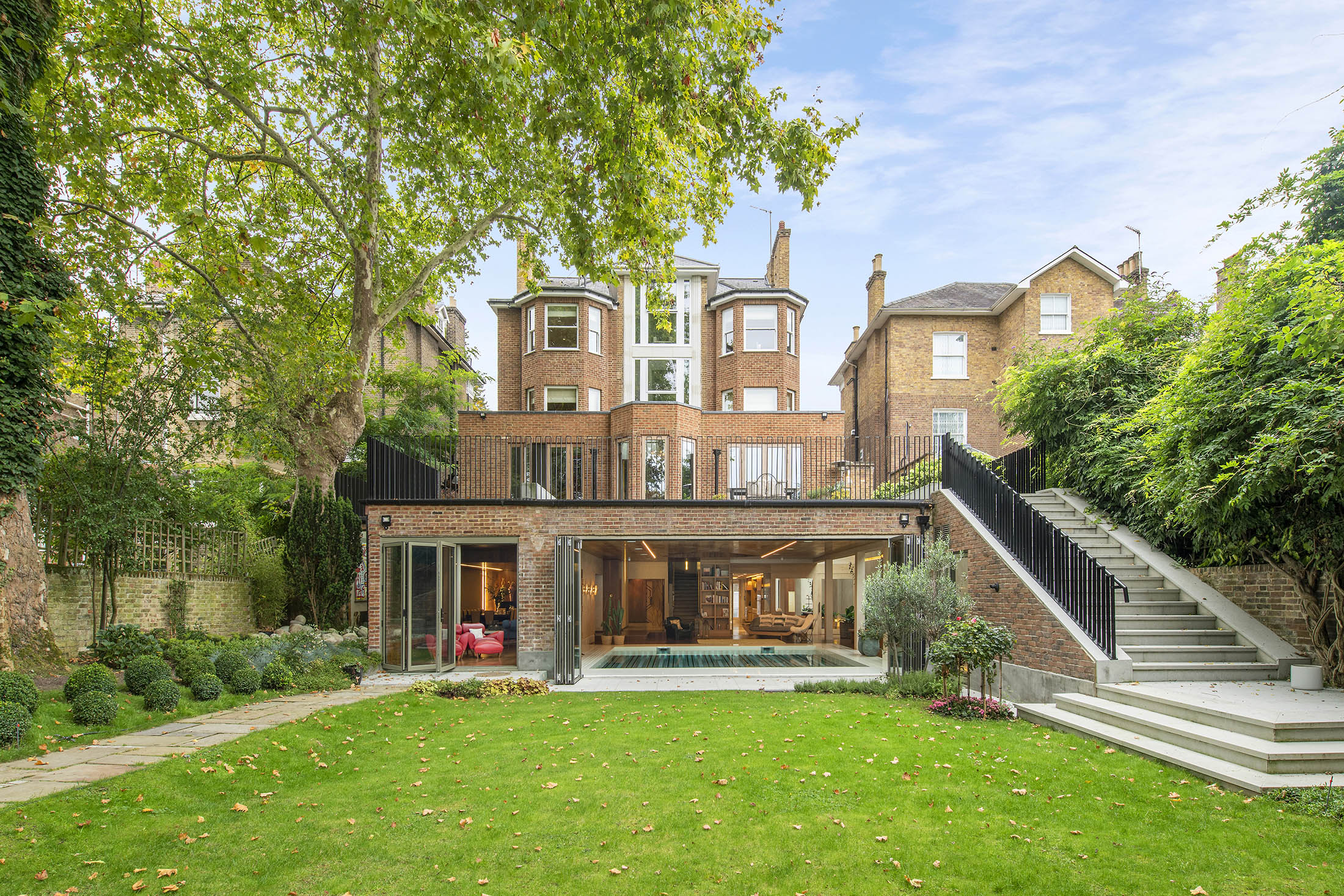
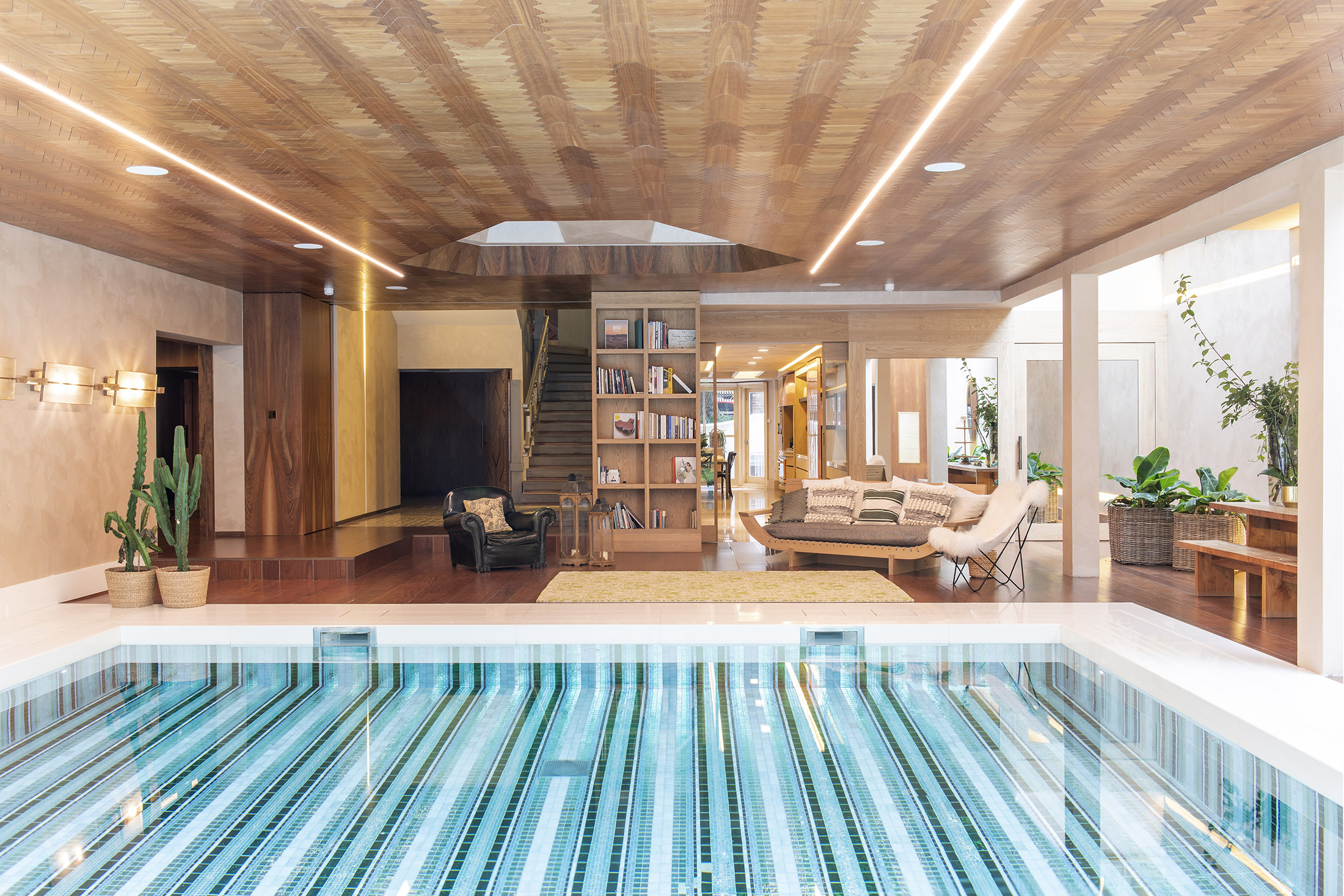
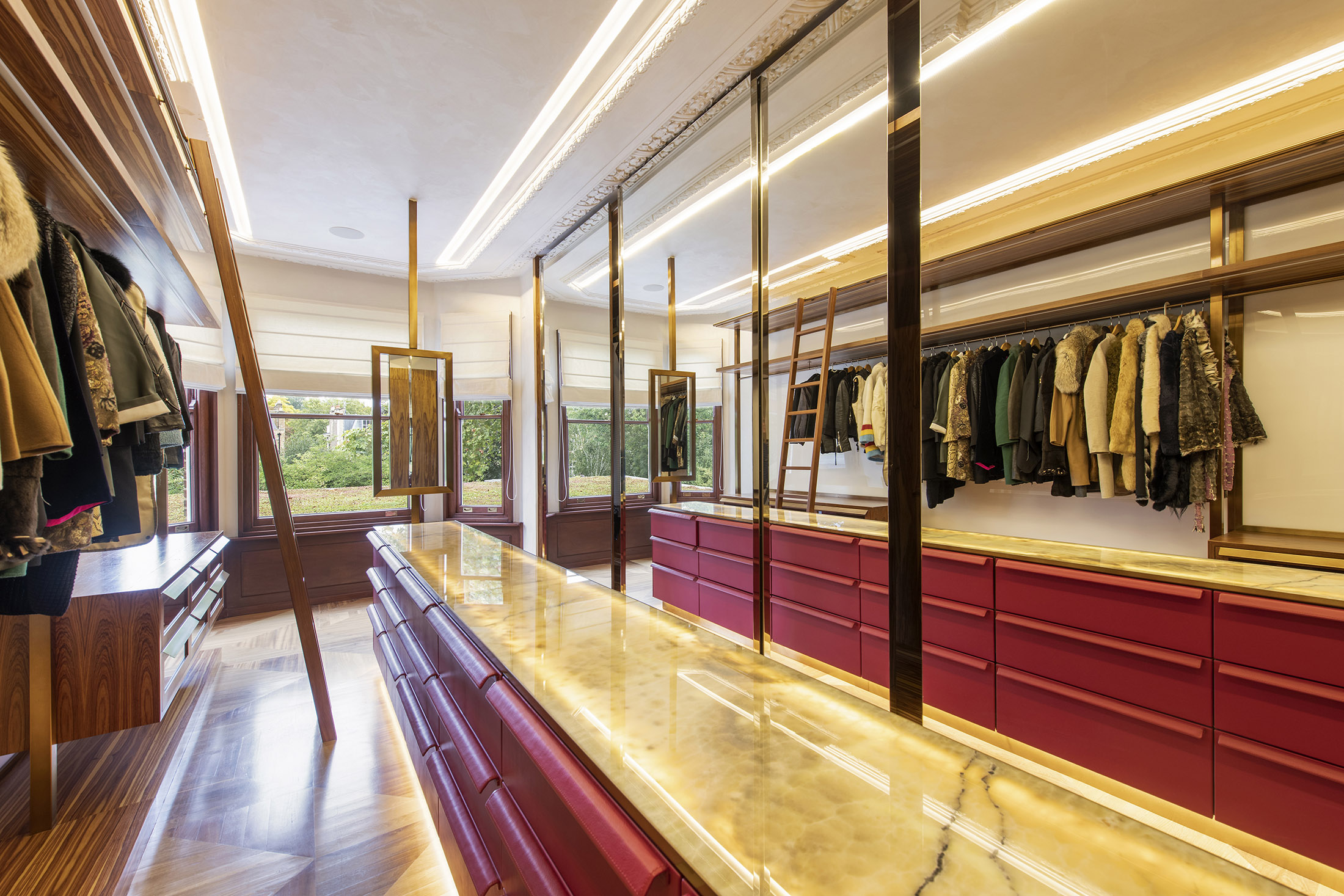
In a palace executed in 2019 for a VIP client in Riyadh, Saudi Arabia, the team worked on the architectural and interior design of the 45,000 square meter house. The team worked on abespoke sumptuous interior design and implemented extensive semiprecious stone floors with ebony and eucalyptus cladding. This set the stage for all the unique one-off furniture pieces specifically made for this palace.
In another palace in Saudi Arabia, the team used Egyptian alabaster material for the stairs and all of the house’s entrances. This was difficult because a huge quantity of wood was also used around the alabaster; they could not import the quantity that they wanted. Gold leaf material was used for the walls and ceilings. Gold mirrors, mirror-finished brass, copper leaf, and paintings made by Saudi Arabian artists were also used in the house. The entire palace is covered in textile with stretch synthetic suede.
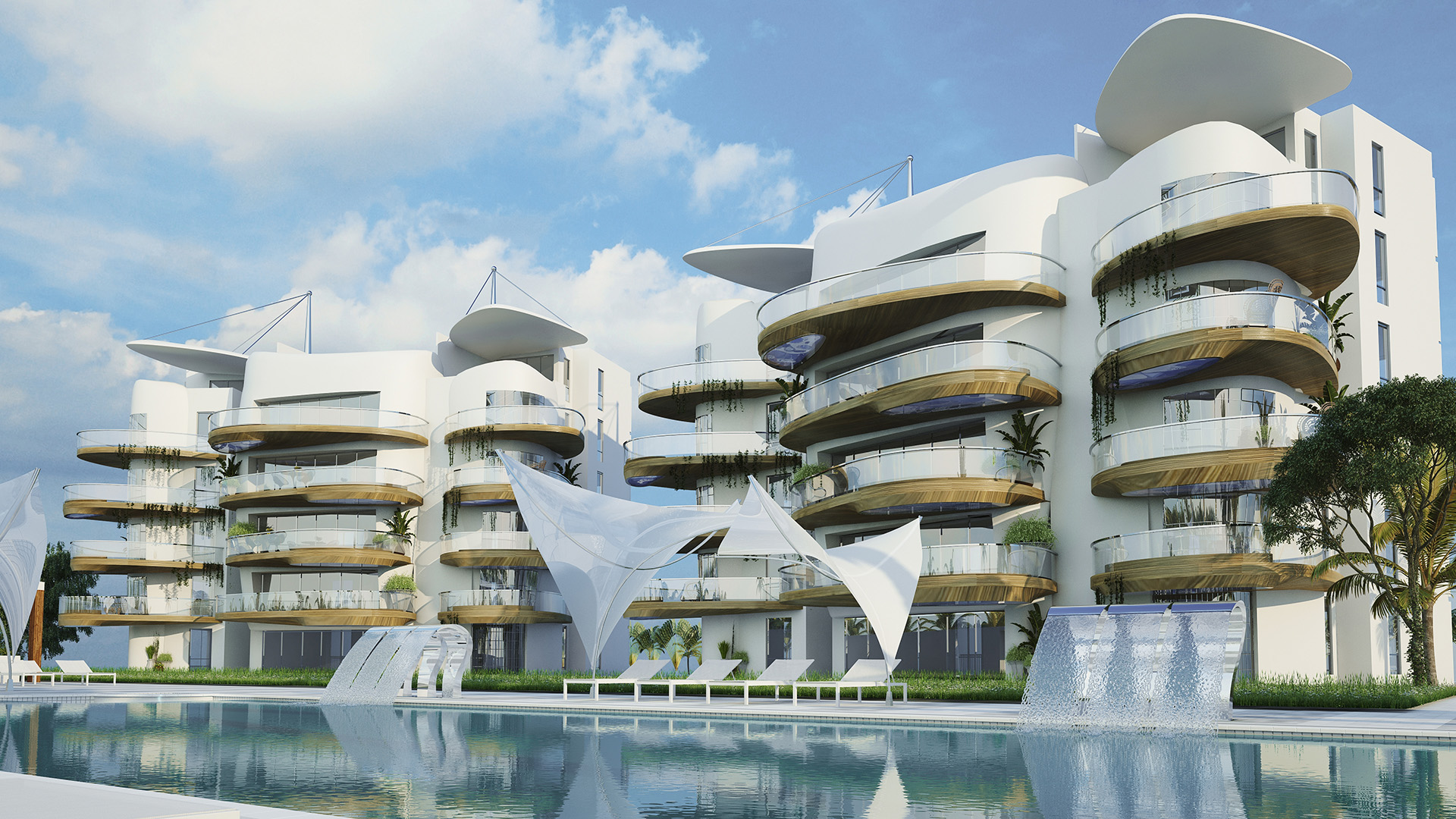
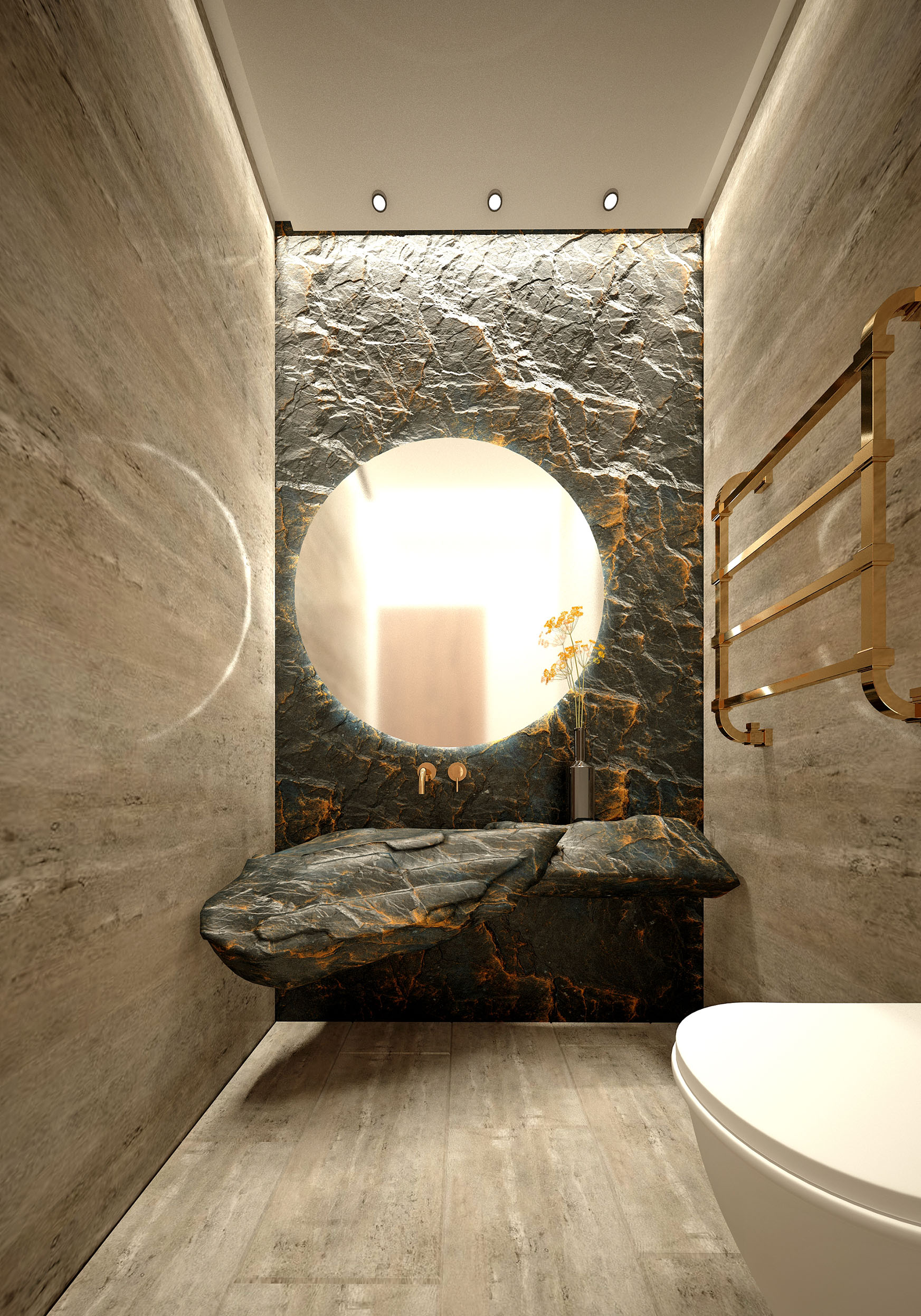
For a residential villain Palm Hills in Egypt, the team worked on the architectural and interior design of a 2, 900 square meter space. The team executed a modern minimal exterior with a rich and luxurious split-level interior design bursting of double heights with a mezzanine spatial experience. The villa’s gardens overlook the golfing area while providing expansive views of the Egyptian pyramids.
For the high-standard Gohar Hospital and Women’s Health Clinic,DB Architects used Terrazzo marble for the flooring and PVC hygiene cladding— made specifically for hospitals— for the walls. One of DB Architect’s artists has exclusively brought about hand-made drawings of baby feet on the wall. Certain materials needed to be used in the hospital for hygienic purposes. For example, they had to use anti-bacterial hospital paint to use on the walls. Light colors were used, such as white, blue, green, and yellow for the sole purpose of it being a maternity hospital and women’s health clinic. Their goal was to implement all the necessary hygienic protocol architectural design requirements, but at the same time, create a decorative and luxurious space.
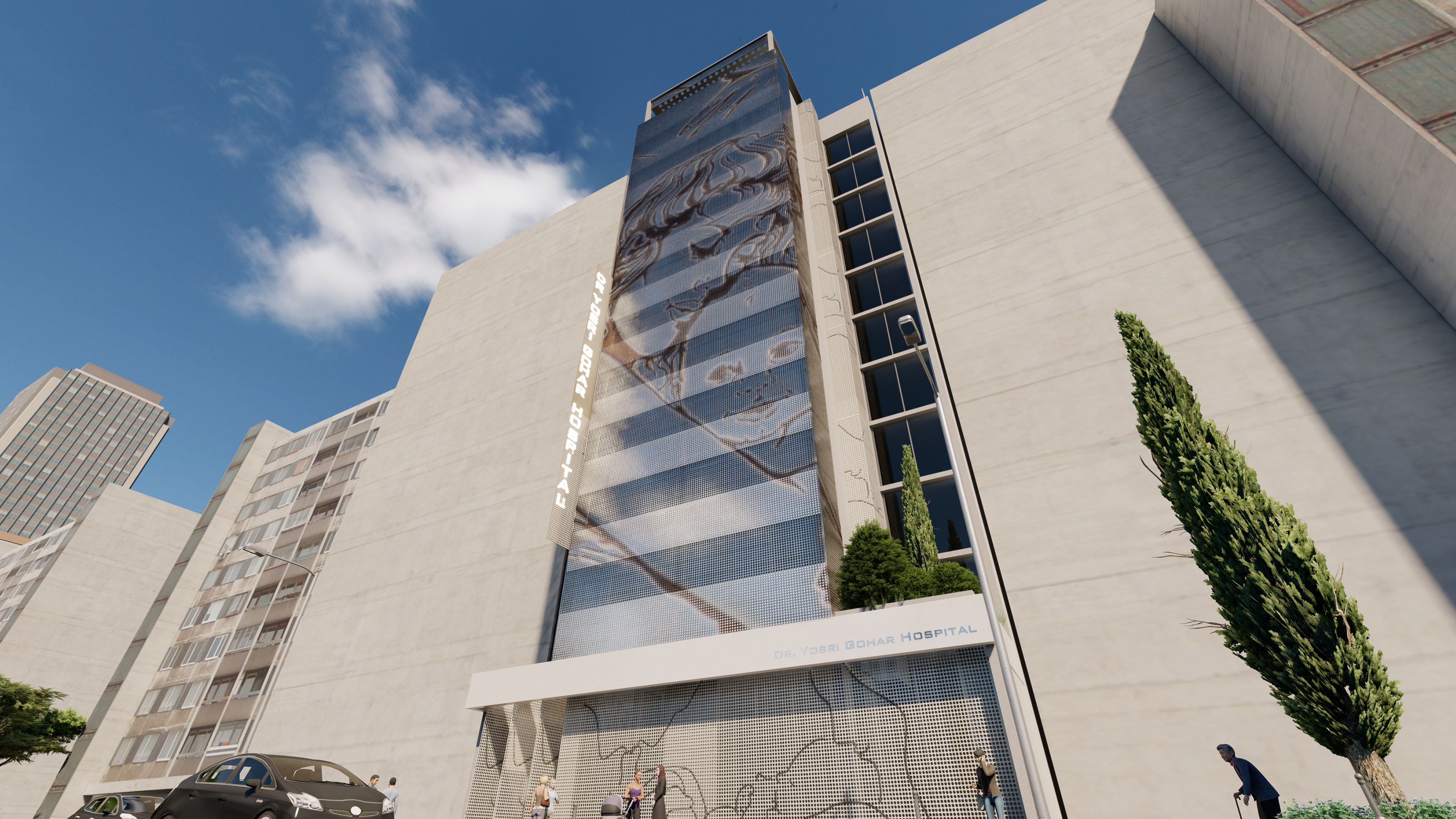
The elevation of the hospital provides the patients with a Nile River view from their room. As part of the Egyptian culture, when a family member gives birth, a lot of people are involved, including family members, extended family members, and friends. It is a whole ceremony, and therefore, they executed the rooms accordingly in terms of large spaces. This illustrated that DB Architects put a huge emphasis on understanding the culture of the place they are building the project in.
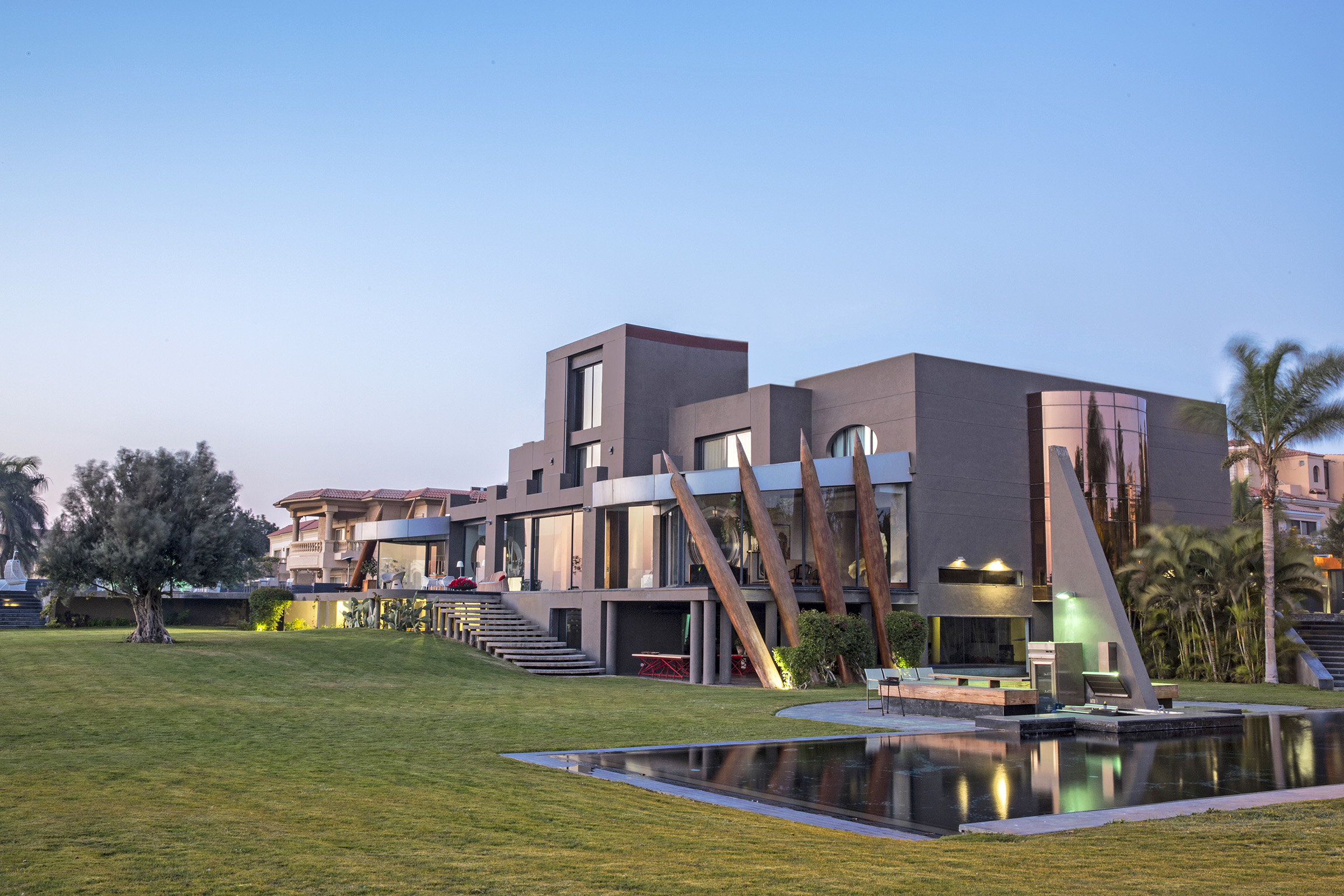
CONCLUSION:
DB Architects: A story of hard work, perseverance, and success.
Practical life made the three siblings realize that they complement one another. They had a vision that was meant to work from early on. As the trio progressed, they had abundant offers to design homes, palaces, and offices. As illustrated, their passion for work led them to endeavor in various projects of all sizes and execute them with the utmost precision and professionalism. The trio has proven that hard work and dedication are a formula of success. They offer integrity in all the work that they undertake, and therefore, present to the client impressive results that exceed the client’s expectations.

‘Luxury cannot be bought; it is the inevitable necessity of a human thought.’
I have come through this statement a long time ago, but only today, after this enlightening interview with the Soufrakis that I have finally understood what it truly meant.

